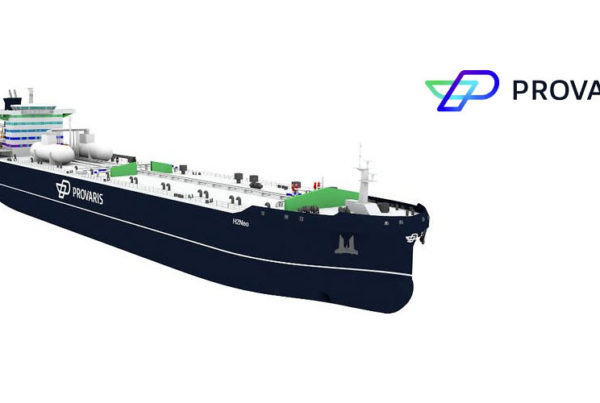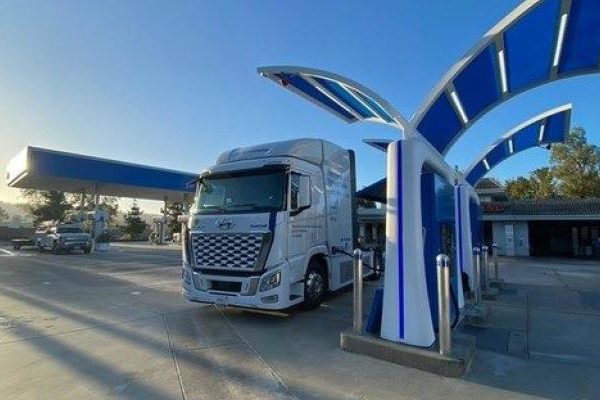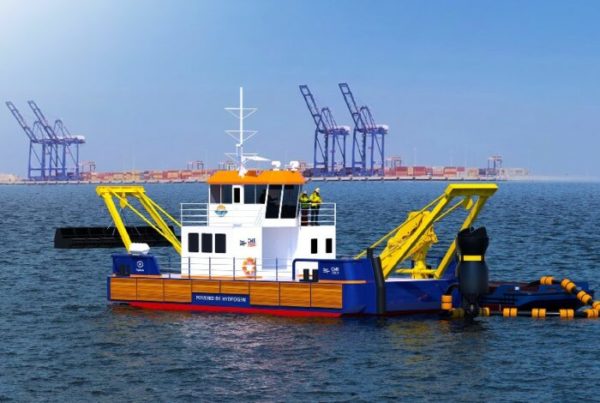
Production trials set for 2028 after plant passed safety test in March.
TOKYO — The Japanese government plans to start field testing clean hydrogen production using nuclear power as soon as 2028, Nikkei has learned, with the move following a successful safety test of a next-generation reactor last week.
The Japan Atomic Energy Agency (JAEA) tested the High Temperature Engineering Test Reactor (HTTR) in Ibaraki prefecture on March 28. The trial was conducted in conjunction with the Organisation for Economic Co-operation and Development.
The safety test cleared a main hurdle toward practical use. Even at 100% power output at roughly 850 C, the HTTR was able to cool down naturally and shutdown without inserting control rods.
“It demonstrated it was capable of a high level of safety even during an accident,” said a JAEA representative.
The HTTR is a type of high-temperature gas-cooled reactor that generates less power than a typical reactor, but is considered safer.
The Japanese government plans to use the heat produced by the HTTR to manufacture hydrogen. The government will take the lead until the technology is established, then let the private sector take over when the tech is ready for wider use.
Following the 2011 disaster at the Fukushima Daiichi nuclear plant, nuclear power development came to a worldwide standstill. However, after the Paris climate agreement was adopted in 2015, many countries started to focus on researching and developing nuclear power as an electricity source to complement renewable energy.
By 2050, global power demand will expand up to 50% compared with today, according to the International Energy Agency. Meeting that demand with renewables alone will be a challenge.
Nuclear energy is seen by many as a solution for manufacturing hydrogen without producing greenhouse gas emissions.
Hydrogen is thought to be essential for eliminating industrial emissions in several sectors, including power, aviation, marine shipping and steel. Because nuclear energy does not produce greenhouse gases, the hydrogen production process using a reactor can be executed with nearly zero emissions.
The JAEA will petition Japan’s Nuclear Regulation Authority as early as this year to begin screenings for connecting hydrogen production equipment to a high-temperature gas-cooled reactor. If the screenings go well, a field test for nuclear hydrogen production will launch in 2028.
The government has set a goal of expanding the annual supply of hydrogen sixfold to approximately 12 million tonnes by 2040.
The HTTR has a thermal output of 30 megawatts. If the scale is expanded to 250 MW, that would make enough green hydrogen to power 200,000 fuel cell vehicles for a year, according to a JAEA estimate.
Because of the limited output of the HTTR, JAEA plans to put multiple units in place.
The Japanese government recognizes five reactor types as next-generation advanced reactors. Apart from the advanced boiling water reactor, which has attained commercial viability overseas, the high-temperature gas-cooled reactor is considered to be the closest to the proof-of-concept test stage. The other three types are not expected to get to that stage until at least the 2040s.
Japan’s basic policy for green transformation, approved by the cabinet in February 2023, called for 1 trillion yen ($6.58 billion) to be allocated toward building high-temperature gas-cooled reactors and fast reactors over the next 10 years. This initiative will be funded by green transformation economy transition bonds.
There is still a high degree of skepticism toward nuclear power in Japan post-Fukushima. The location for disposing nuclear waste has not been determined either.
Japan has a history of successfully field testing advanced nuclear technology that failed to reach commercial feasibility. It remains to be seen whether the private sector will see nuclear hydrogen production as a viable investment target.
SOURCE: NIKKEI Asia
Read the most up to date Fuel Cell and Hydrogen Industry news at FuelCellsWorks




